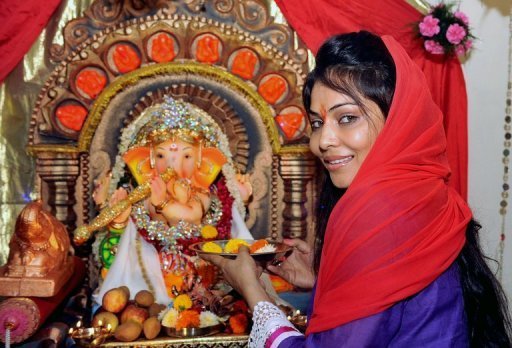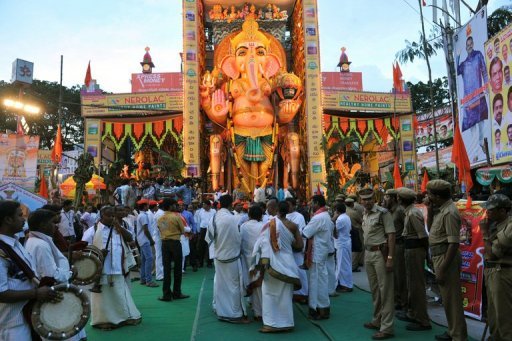
While devout Hindus wait for up to 90 hours to see their favourite deity at Ganesh Chaturthi, one of India’s major festivals, others are opting to dodge the queues this year and say a virtual prayer instead.
The 11-day celebration of the birth of elephant-headed Lord Ganesha draws millions to worship at decorated idols of the god, but the statues are increasingly available to followers via live Internet streams.
“Every year people were requesting it, so this year we decided to go online,” said Uday Salian, committee spokesman at the Andhericha Raja, a popular Ganesha idol in Mumbai.
The colourful figure can be watched for free on their website during the twice daily “aarti” ritual, when offerings of light are made to the deity, meaning devotees can receive their blessings through the net.
The move was largely meant for overseas followers, but religious domestic markets are also being tapped.
The Lalbaugcha Raja, Mumbai’s favourite statue, gets about ten million visitors during the festival. It also appears on YouTube and television, and is being live streamed around the clock to mobile phones — for a fee.
Live streaming is just one way content providers, telecom firms and mobile app makers are latching onto Hindu traditions as the online Indian market grows, especially on phones.
During the ongoing festival, which runs until Saturday, people can download Ganesha puzzle games, perform a ceremony known as “pooja” with the help of a mobile instead of a priest, and listen to chanting applications.
Other gods are also proving lucrative.
Vistaas Digital Media, which has acquired the live mobile rights to the Lalbaugcha Raja, started the “Divine India” website three months ago and so far has 50,000 paid subscribers, paying 200 rupees ($3.75) a month.
The site offers live streaming from more than 60 holy sites of different religions practised across the country, along with footage from more than 1,500 shrines. The firm aims for half a million subscribers by the year’s end.
“I saw people travel for a long time and stand in long queues and they didn’t get a single second in front of the god. I wanted a way for people to pray peacefully at home,” said Vistaas founder Rajiv K. Sanghvi.
Making money from religion is nothing new in India, observers say.
“All the Ganesha pandals (religious structures) in the city have become more and more commercial,” Anil Dharker, a Mumbai-based columnist on social issues, told AFP.
But he doubted that Internet schemes would win over physical visitors.

